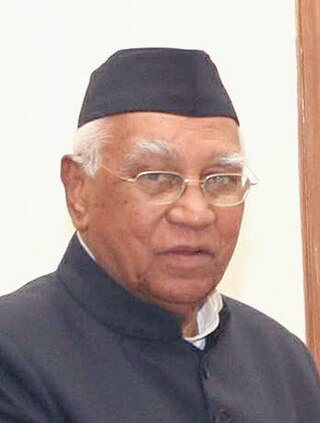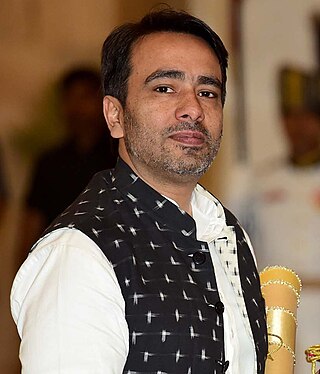A member of the Legislative Assembly (MLA) is a representative elected by the voters of an electoral district (constituency) to the legislature of State government in the Indian system of government. From each constituency, the people elect one representative who then becomes a member of the Legislative Assembly (MLA). Each state has between seven and nine MLAs for every Member of Parliament (MP) that it has in the Lok Sabha, the lower house of India's bicameral parliament. There are also members in three unicameral legislatures in Union Territories: the Delhi Legislative Assembly, Jammu and Kashmir Legislative Assembly and the Puducherry Legislative Assembly. Only a Member of the Legislative Assembly can work as a minister for more than 6 months. If a non-Member of the Legislative Assembly becomes a Chief Minister or a minister, he must become an MLA within 6 months to continue in the job. Only a Member of the Legislative Assembly can become the Speaker of the Legislature

University Grants Commission is a statutory body under Department of Higher Education, Ministry of Education, Government of India. It was set up in accordance to the UGC Act 1956 and is charged with coordination, determination and maintenance of standards of higher education in India. It provides recognition to universities in India, and disbursements of funds to such recognized universities and colleges. The UGC headquarters are in New Delhi, and it has six regional centres in Pune, Bhopal, Kolkata, Hyderabad, Guwahati and Bangalore. A proposal to replace it with another new regulatory body called HECI is under consideration by the Government of India. The UGC provides doctoral scholarships to all those who clear JRF in the National Eligibility Test. On an average, each year ₹725 crore (US$87 million) is spent on doctoral and post-doctoral fellowships by the commission.

Pantnagar is a town and a university campus in Udham Singh Nagar District, Uttarakhand. Nainital, Kashipur, Rudrapur, Kiccha and Haldwani are the major cities surrounding Pantnagar.
The Indian Institutes of Technology (IITs) are the premier autonomous public technical and research universities located across India, founded under the leadership of Pandit Jawaharlal Nehru.

Akhlaq Ur Rehman Kidwai was an Indian chemist and politician. He served as Governor of the states of Bihar, West Bengal and Haryana. Also, he worked as Governor of the state of Rajasthan. He was a member of the Rajya Sabha, the upper house of the Indian parliament, from 1999 to 2004. He was awarded the Padma Vibhushan, India's second highest civilian award.

DDU Gorakhpur University is located in Gorakhpur, Uttar Pradesh. The University of Gorakhpur is a teaching and residential-cum-affiliating University. It has entered the league of top five state universities of the country by achieving NAAC Grade A++ rank. It has become the first university of the state to get a 3.78 score. It is about two kilometres (1.2 mi). from the downtown to the east and almost walking distance from railway station to the south.

The Central Institute of Fisheries Education (CIFE) is a Deemed to be a University and institution of higher learning for fisheries science in Mumbai, India. CIFE has over four decades of leadership in human resource development with its alumni aiding in the development of fisheries and aquaculture worldwide, producing notable contributions to research and technological advancements to their credit.
The state of Uttar Pradesh had a small tradition of learning, although it had remained mostly confined to the elite class and the religious establishment.

Chaudhary Jayant Singh , better known as Jayant Chaudhary is an Indian politician who is serving as the 5th Minister of Skill Development and Entrepreneurship since 2024. He is Member of the Rajya Sabha from Uttar Pradesh since 2022. Previously, he also served as a member of 15th Lok Sabha from Mathura. He is the National Chairman of the Rashtriya Lok Dal.

G. B. Pant University of Agriculture and Technology, also known as Pantnagar University, is the first agricultural university of India. It was inaugurated by Jawahar Lal Nehru on 17 November 1960 as the "Uttar Pradesh Agricultural University" (UPAU). Later the name was changed to "Govind Ballabh Pant University of Agriculture and Technology" in 1972 in memory of the first Chief Minister of Uttar Pradesh, statesman and Bharat Ratna recipient Pandit Govind Ballabh Pant. The University lies in the campus-town of Pantnagar in Kichha Tehseel and in the district of Udham Singh Nagar, Uttarakhand. The university is regarded as the harbinger of the Green Revolution in India.

College of Technology, Pantnagar also known as COT, Pantnagar or COT, is a college located in Pantnagar, in the state of Uttarakhand, India. It was established under the then Uttar Pradesh Agricultural University and now called Govind Ballabh Pant University of Agriculture & Technology. The College of Technology was established in this university in 1962.

Nagendra Kumar Singh is an Indian agricultural scientist. He is presently a National Professor Dr. B.P. Pal Chair and JC Bose National Fellow at ICAR-National Institute for Plant Biotechnology, Indian Agricultural Research Institute, New Delhi. He was born in a small village Rajapur in the Mau District of Uttar Pradesh, India. He is known for his research in the area of plant genomics, genetics, molecular breeding and biotechnology, particularly for his contribution in the decoding of rice, tomato, wheat, pigeon pea, jute and mango genomes and understanding of wheat seed storage proteins and their effect on wheat quality. He has made significant advances in comparative analysis of rice and wheat genomes and mapping of genes for yield, salt tolerance and basmati quality traits in rice. He is one of the highest cited agricultural scientists from India for the last five years.
Virendra Verma was an Indian politician, born in Shamli, Uttar Pradesh. He served as the Governor of Punjab and the Administrator of Chandigarh (1990) as well as the Governor of Himachal Pradesh (1990–1993).
Indian Institutes of Information Technology (IIITs) are centrally funded technical institutes located across India. They are a group of 26 interdisciplinary technology-based-engineering research institutions in India which are focused on information technology. Five(5) Institutes of them are established, Fully funded and managed by the Ministry of Education (MOE), Gov. of India. The other 21 Institutions are set up on the public-private partnership (PPP) model, funded by the central government, state governments and industry partners in the ratio 50:35:15.

Rani Lakshmi Bai Central Agricultural University is central agricultural university located in Jhansi district of Uttar Pradesh. The university was established by the government of India through the Rani Lakshmi Bai Central Agricultural University Act - 2014, passed by parliament in 2014. The first academic session of university was started from July 2014. The university follows a semester system with two semesters every year.









